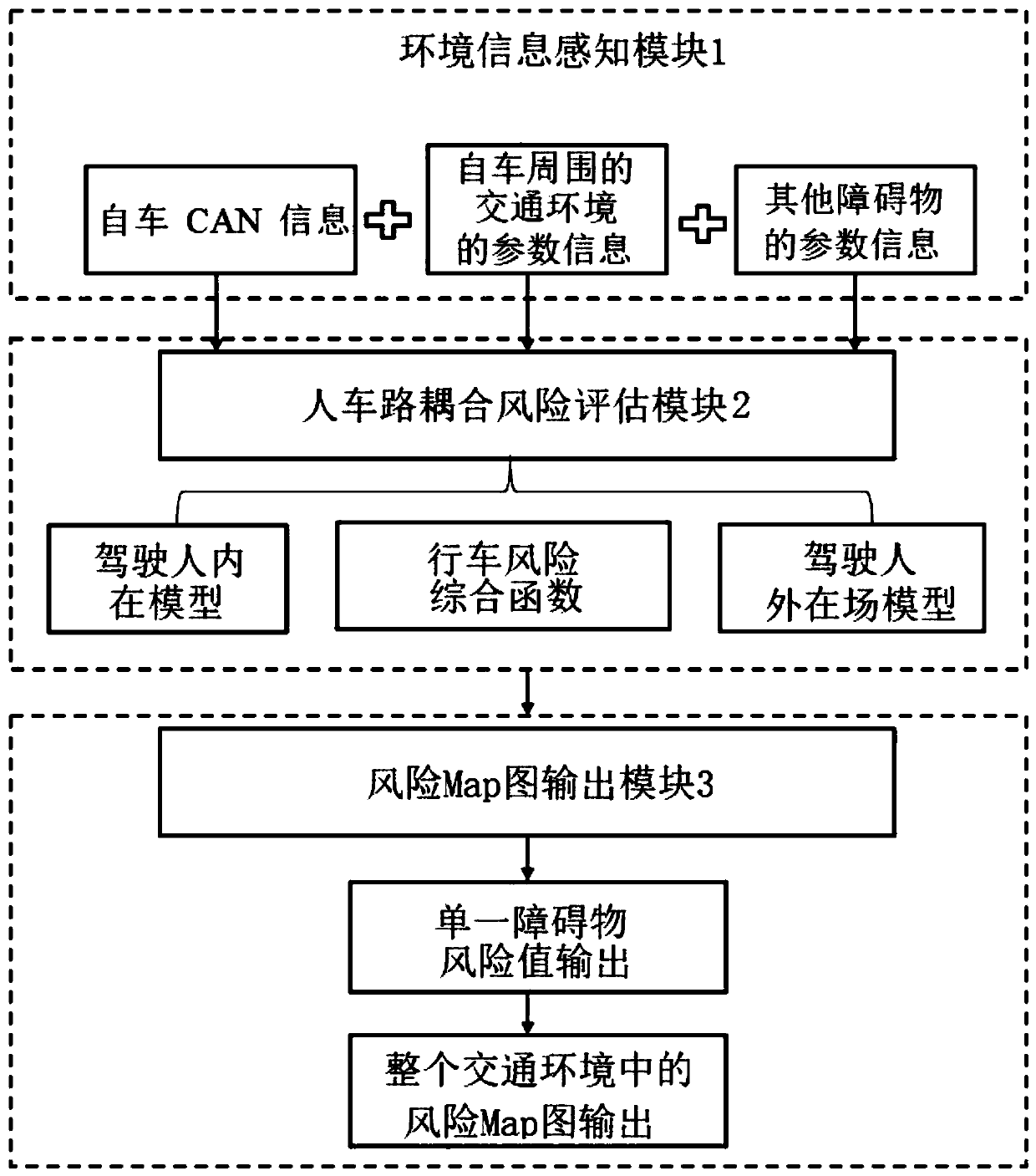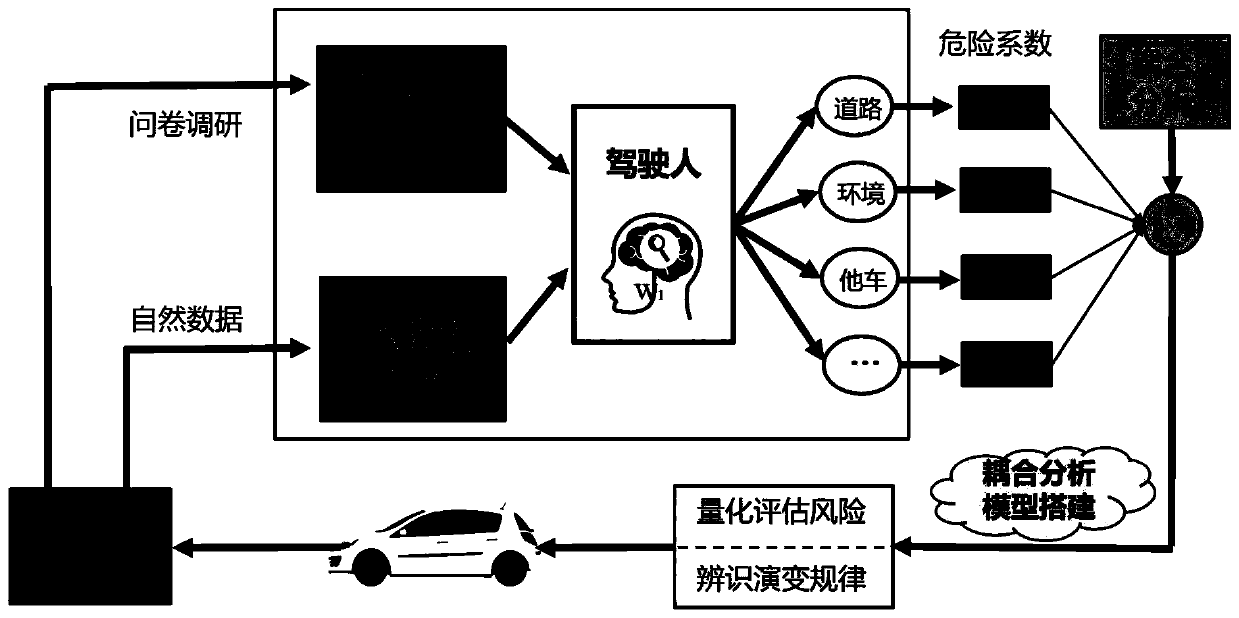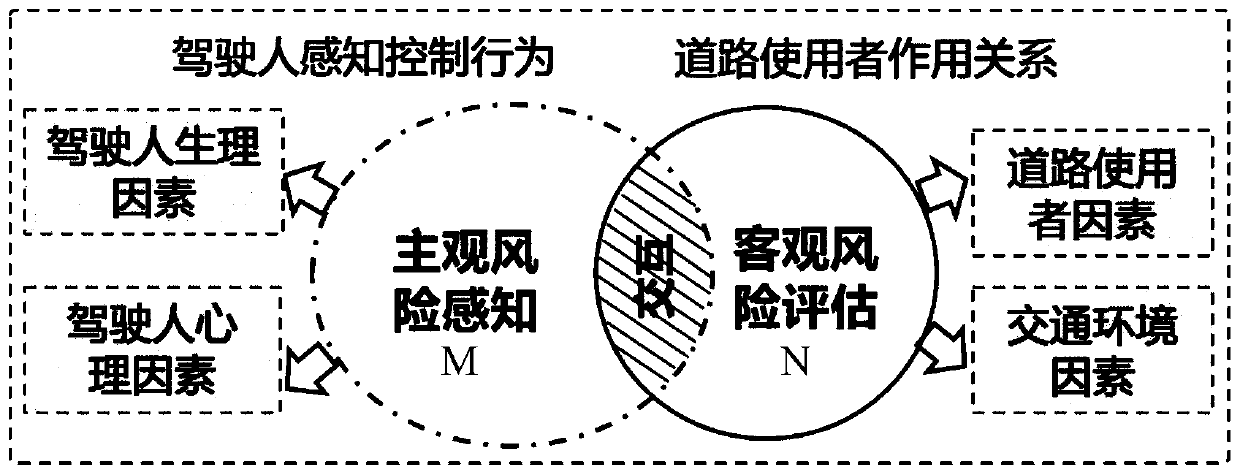Driver cognitive perspective-based pedestrian-vehicle-road coupling risk assessment method and device
A technology of risk assessment and risk assessment model, applied in the direction of instruments, data processing applications, resources, etc., can solve the problems of lack of risk assessment devices, analysis, and difficult to quantify the output risk value, etc., to achieve the effect of expanding the scope of application
- Summary
- Abstract
- Description
- Claims
- Application Information
AI Technical Summary
Problems solved by technology
Method used
Image
Examples
Example Embodiment
[0052] The present invention will be described in detail below with reference to the drawings and embodiments.
[0053] The human-vehicle-road coupling risk assessment method based on the cognitive perspective of the driver provided in this embodiment includes:
[0054] S1: Acquire parameter information of the vehicle, the traffic environment around the vehicle, and the traffic object in the traffic environment around the vehicle.
[0055] Among them, the "parameter information of the own car" is the CAN information of the own car, which includes the motion state information of the own car: such as engine speed, acceleration and deceleration, brakes, speed, gear position, steering wheel angle and GPS information; the physics of the own car Parameters: such as vehicle mass, vehicle volume, vehicle launch performance, etc.
[0056] "The traffic environment around the own vehicle" means the traffic situation in an area covered by the own vehicle as the center. "Parameter information of ...
PUM
 Login to view more
Login to view more Abstract
Description
Claims
Application Information
 Login to view more
Login to view more - R&D Engineer
- R&D Manager
- IP Professional
- Industry Leading Data Capabilities
- Powerful AI technology
- Patent DNA Extraction
Browse by: Latest US Patents, China's latest patents, Technical Efficacy Thesaurus, Application Domain, Technology Topic.
© 2024 PatSnap. All rights reserved.Legal|Privacy policy|Modern Slavery Act Transparency Statement|Sitemap



